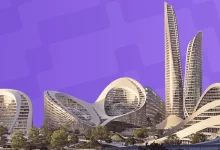Why Design Innovation is Key in Global Construction’s Biggest Projects
When you think of global construction, it’s easy to picture towering skyscrapers or sprawling infrastructure projects. But behind these marvels is a driving force that often gets overlooked: design innovation. It’s not just about making structures look impressive—it’s about pushing the limits of what’s possible while solving complex challenges. Whether you’re an international construction company or a curious observer, understanding the role of design innovation is key to appreciating how the world’s largest projects come to life.
Pushing Boundaries with Advanced Construction Techniques
In global construction, innovation starts with rethinking how we build. Advanced construction techniques are reshaping the industry, enabling projects that were once unimaginable. From 3D printing to modular construction, these methods are making it faster and more efficient to complete massive projects, all while maintaining high standards of quality and safety.
Take modular construction as an example. Rather than building everything on-site, entire sections of a structure are pre-fabricated and assembled like building blocks. This reduces on-site work time and increases precision, as these modules are often created in controlled environments. For international construction companies, this kind of efficiency is invaluable when managing complex, large-scale projects across different regions.
Beyond speed and efficiency, these advanced techniques allow for greater flexibility in design. Whether it’s curved walls or unconventional building materials, new methods are helping to push architectural boundaries, resulting in unique and forward-thinking structures that truly stand out on the global stage.
Reducing Environmental Impact Through Thoughtful Designs
Construction projects, especially on a global scale, can have a significant environmental footprint. That’s why design innovation plays a crucial role in reducing this impact. By incorporating sustainable practices from the earliest stages of design, construction companies can minimize resource consumption, reduce waste, and even lower the long-term energy demands of buildings.
One approach involves integrating renewable energy sources directly into building designs. Solar panels, wind turbines, and rainwater collection systems can be seamlessly incorporated into the architecture, ensuring that these projects not only serve their purpose but do so in an eco-friendly way. Global construction projects can also focus on using locally sourced materials, cutting down on transportation emissions and supporting regional economies.
Innovative designs also take into account the building’s lifecycle. By designing with the future in mind—such as allowing for easy upgrades or repurposing—the environmental impact of construction is reduced, as there’s less need for demolition or excessive renovation down the road.
Enhancing Project Efficiency with Smart Building Solutions
Smart building solutions are becoming a central feature of modern construction projects. By incorporating cutting-edge technology, design innovation is driving greater efficiency from start to finish. Sensors, automated systems, and data analytics allow buildings to manage everything from energy consumption to maintenance schedules, often with little human intervention.
For international construction companies, this means fewer delays and less downtime. These smart solutions can identify potential issues before they become problems, ensuring that projects stay on track and within budget. This is particularly important in large, complex projects where delays can be costly.
Smart buildings are also transforming the way we use space. With the integration of IoT (Internet of Things) technology, spaces can adapt to the needs of their occupants in real-time, whether it’s adjusting lighting based on occupancy or regulating temperature for optimal comfort. This not only makes buildings more efficient but also improves the user experience, a key consideration in today’s design-focused world.
Meeting Global Infrastructure Demands with Creative Concepts
As the global population continues to grow, so does the demand for infrastructure. But simply building more roads, bridges, and airports isn’t enough. These projects need to be designed in a way that meets the unique needs of each region while addressing challenges like congestion, climate change, and urbanization.
Creative design concepts are helping to address these challenges. For example, multi-purpose structures that combine transportation, commerce, and public spaces are becoming more common in global construction. These designs allow cities to maximize limited space while providing the infrastructure needed to support economic growth and improve quality of life.
In regions prone to natural disasters, innovation is also key to designing resilient infrastructure. Buildings and bridges are being constructed with materials that can withstand extreme conditions, ensuring that they remain functional even in the face of earthquakes, floods, or hurricanes. This kind of forward-thinking design not only meets today’s needs but prepares for the challenges of tomorrow.
Improving Safety Standards in High-Risk Construction Zones
Safety is always a top priority in construction, but in high-risk zones, it becomes even more critical. Design innovation plays a major role in improving safety standards by introducing features that protect both workers and future occupants. Whether it’s structural designs that prevent collapse or systems that monitor environmental hazards in real time, these advancements are making dangerous work environments safer.
For example, drones and robots are now used to perform tasks in hazardous areas, reducing the need for human workers to put themselves in harm’s way. These technologies can also be used to inspect hard-to-reach areas, ensuring that safety standards are maintained without compromising efficiency.
Additionally, new materials like self-healing concrete or fire-resistant cladding are helping to protect structures from potential disasters. For an international construction company operating in a high-risk area, these innovative safety measures are not just a benefit—they’re a necessity.















